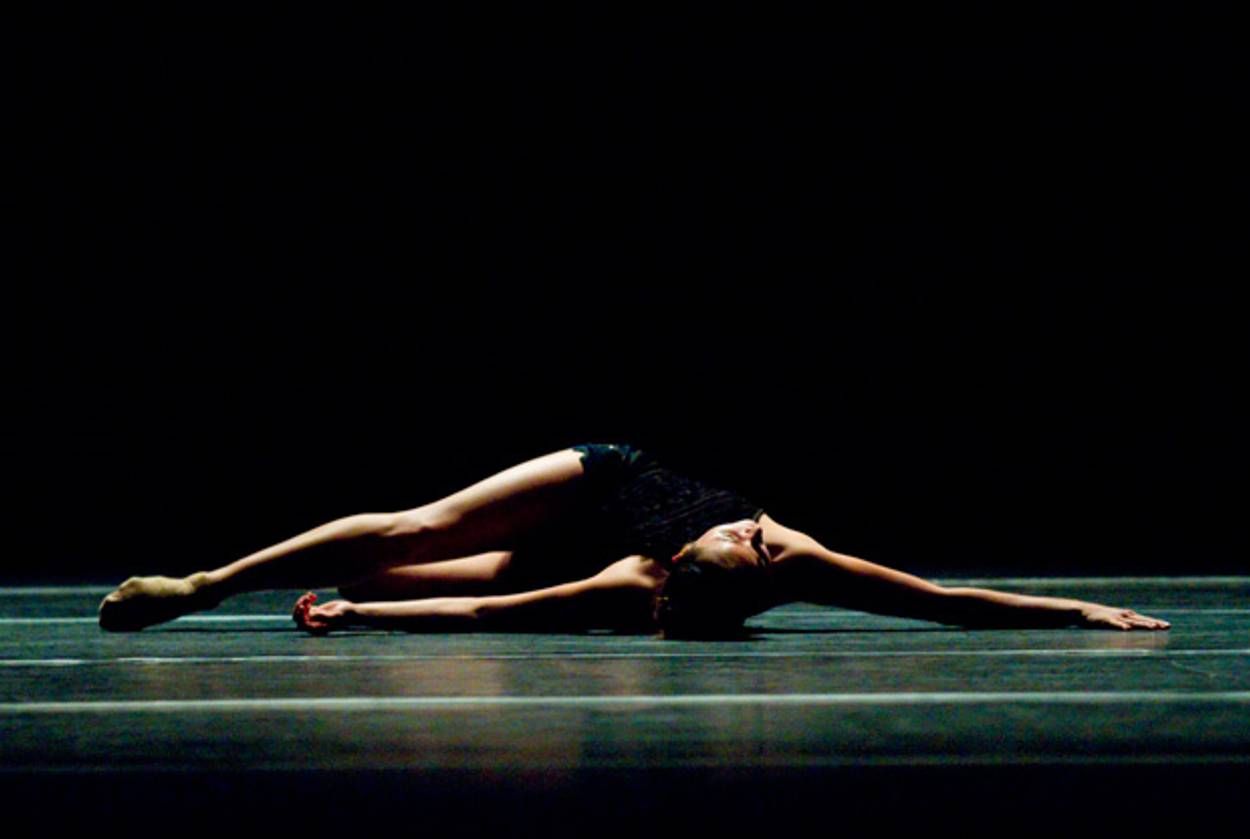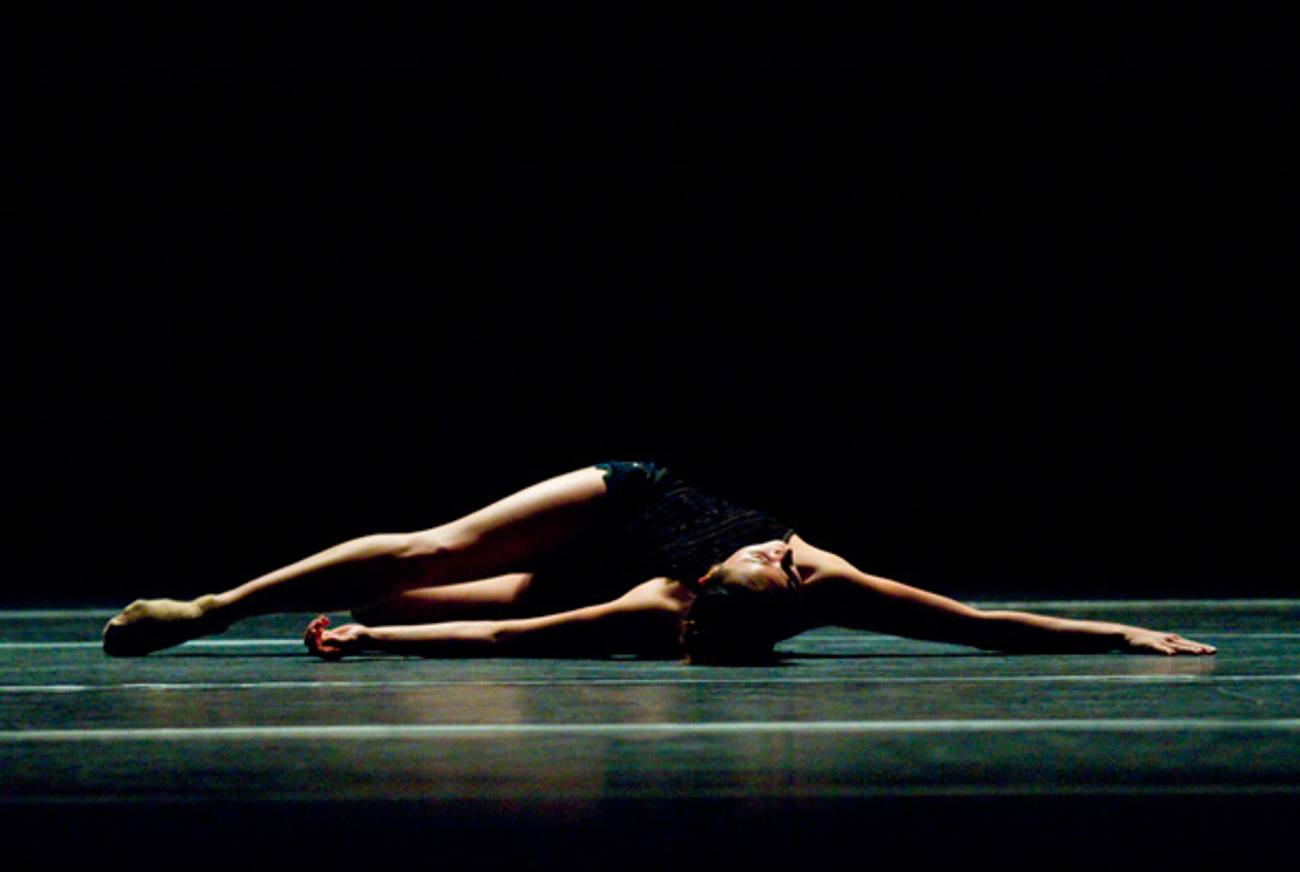Moving Pieces
Innovative Israeli choreographers redefine the language of contemporary dance in a pair of contrasting shows in the United States




This month the work of two Israeli dance innovators has come to our shores: Emanuel Gat’s Preludes et Fugues created for the Ballet du Grand Théâtre de Genève, and Inbal Pinto & Avshalom Pollak Dance Company’s Oyster. Gat’s work is pared down, examining the relationship of bodies connecting in space. Pinto and Pollak synthesize theater, visual art, and dance to develop character studies of the human condition. The compositions could not be more different, and their diversity is a testament to the sophisticated variety of Israeli modern dance. Both of these dance artists go beyond putting steps onstage—they aim to remodel the language of choreography.
“There are two ways of approaching choreography: inventing and discovering,” said Gat in an interview. “I choose the second approach. Instead of designing a new vision, I uncover the mechanisms, the logic, and the movement that is already there. I don’t think of myself as creating a dance; instead, I am creating an environment where choreography can happen.”
On Tuesday night, Ballet du Grand Théâtre de Genève performed the New York premiere of Gat’s Préludes et Fugues as part of a weeklong stand at the Joyce Theater. Set to excerpts from “The Well-Tempered Clavier,” the hypnotic evening-length piece is a choreographic reflection on the music of Johann Sebastian Bach.
“Préludes et Fugues [is not] an attempt to illustrate the music of Bach, nor translate it into movement, but rather a proposition for a co-existence of structures,” Gat wrote in the program notes. “In the same way the art of music relates to our deepest selves, so does dance bare the capacity to convey substance through moving, ever-changing structures.”
In Préludes et Fugues, Gat creates a landscape of sinuous patterns. On the darkly lit stage, the dancers, dressed in pedestrian costumes, form an interconnected community. They play off the intricacies of the piano fugue, repeating themes and moving in canons. As performers run, jump, or slide to the ground, they maintain a constant connection to everyone else onstage.
The choreography is complex: quick staccato footwork interspersed with long voluminous adagios. The dancers rarely move in exact unison, and their different movement phrases and varied facings create a layered, rippling effect. The simplest gestures—the undulation of the arm, the curving of a back, the caress of a cheek—have luxurious fullness. Skilled technicians, the dancers unleash wild jumps and kicks while maintaining the pristine accuracy of ballet technique.
In recent years Théâtre de Genève, which has a century-old classical ballet heritage, has reached out to emerging contemporary choreographers. The ballet director Philippe Cohen commissioned the piece after seeing Gat’s work in Europe.
“Emanuel’s work is really pure. No big effects, just men and women dancing in this very human way,” said Cohen. “I knew it would be a challenge for my dancers. There was a great deal of improvisation, and they are used to more classical training, but it turned out just perfect. There is this beautiful flow from dancer to dancer—it is artistry defined.”
Préludes et Fugues uses music and movement to investigate human interaction. Reacting to each other’s movements, holding and pushing each other in complex lifts and partnered turns, the performers of Préludes et Fugues dance in constant dialogue. Through this moving maze, the dancers often pause to watch one another. Certain dancers break off into solos, duets, and trios exploring more intimate conversations: One pair chases one another while another couple plays follow-the-leader. There is no storyline, but a clear struggle between the individual and the group. Even the most abstract movements are a comment about personal relationships.
“I never understood what abstract dance is,” Gat said. “It’s people. How abstract can it get?”
Gat began dancing at the same time that contemporary dance started to blossom in Israel. The country always had a strong folk-dance tradition, and the dancers of the first large companies, Batsheva and Bat-Dor, collaborated with some of the world’s most esteemed choreographers, such as Martha Graham and Alvin Ailey. The 1990s brought Israel into a new phase. The Suzanne Dellal Centre, an institution devoted to developing dance performance, was built in 1989, giving young choreographers new opportunities to create work. In 1990, visionary choreographer Ohad Naharin took the position of director of Batsheva. His powerful choreography and the development of his movement language, Gaga, inspired a new generation of dancers to reconsider their approach and push past the limits of traditional technique.
It was in this nurturing environment that Gat presented his first solo work, Four Dances, in 1994, only a year after he started performing professionally. He established his own company, Emanuel Gat Dance, in Tel Aviv in 2004, touring extensively in Israel and abroad. A residency brought his group to Istres, France, and in 2007 he decided to make France the company’s permanent home. Since then he has created numerous award-winning pieces for his own troupe as well as for other prestigious companies such as the Paris Opera Ballet and the Sydney Dance Company.
“Dancing abroad was never the master plan. It just happened,” said Gat. “I don’t think about it so consciously, but I’m sure that creating dance in a new country has impacted my work and my ideas.”
Interacting with foreign audiences has been a big part of the experience of many Israeli dance companies. Pinto and Pollak, based in Tel Aviv since 1992, are a partnership of dancer and graphic designer Inbal Pinto and actor Avshalom Pollak. The group has performed in Asia, South America, and Europe and brought Oyster to the United States this past January and February. “We really grow by connecting with diverse audiences. And for some, we may be the only Israelis they have ever seen.”
Pinto and Pollak’s work entices the viewer in a completely different way from the spare esthetic of Gat’s. Lush with vibrant costumes and commanding sets, Oyster is a surrealist fantasy world where puppets, dolls, and clowns come to life. There are myriad vignettes: scenes of a circus sideshow, clowns on leashes, and a doll dancing a tango while floating from a harness high in the air. The bizarre characters of Oyster have extreme personalities: A petite ballerina doll is whimsical, and an elderly lady clown is abusive. Pinto and Pollak juxtapose the pretty with the ugly, reflecting the volatility of human behavior.
The co-directors take part in all aspects of creation, from music arrangement to costume design. They are collage artists, assembling ballet and commedia dell’arte like a Rauschenberg combine. They utilize sketches to inspire some pieces and improvisational exercises to create others, but they place the greatest emphasis on the final product. “There is no recipe to our creation,” said Pollak. “Each piece starts from an idea, but once it is made it takes on a life all its own.”
Developing new ways to paint the human experience onstage, Gat and Pinto and Pollak are two of Israel’s most successful dance start-ups. They are true experimentalists, recognized around the world for their inventive movement style and fearless compositions. Bodies are able to communicate where words fail, and these choreographers break the language barrier with refined work that captures themes relevant to the Israeli experience while remaining universal.
“The choreographic process brings my ideas out,” said Gat. “I don’t set out to do a piece about conflict, but after we go through the process this idea may be reflected. If the audience has a specific narrative in mind they may see it in the work.”
Stacey Menchel Kussell is a culture writer who frequently covers Israeli contemporary dance.
Stacey Menchel Kussell is a culture writer who frequently covers Israeli contemporary dance.